7 Products Ahead Of Their Time
No one wants to be the first one to arrive at a party. It’s awkward and boring. Similarly, a product that arrives “ahead of its time” may have difficulty finding its footing. History is full of new products that arrived too early too the market, and sometimes they were spectacular failures. In the case of the products on our list, the ideas or technology behind them went on to become enormously successful. Keep them in mind as you prepare your product launch.
-
The Pioneer LaserDisc
 Even though the LaserDisc featured vastly superior audio and video quality compared to its main rival the VHS tape, that alone wasn’t enough to keep it from being poorly received by most of the world. It was the first commercially available optical disc and was generally agreed to be a great product, but the public failed to adopt it thanks to its cumbersome size and prohibitive cost.
Even though the LaserDisc featured vastly superior audio and video quality compared to its main rival the VHS tape, that alone wasn’t enough to keep it from being poorly received by most of the world. It was the first commercially available optical disc and was generally agreed to be a great product, but the public failed to adopt it thanks to its cumbersome size and prohibitive cost.However, the technology used in the LaserDisc was ahead of its time enough to become the foundation for revolutionary products such as the CD and DVD.
-
Nintendo Virtual Boy
 The Virtual Boy was the first game console capable of displaying native 3D graphics. While it was supposed to give the player the feeling of depth and space, it mostly just made people feel like they had the flu. Couple that with a lackluster gaming experience and a heavy price tag, and the Virtual Boy became a quick failure.
The Virtual Boy was the first game console capable of displaying native 3D graphics. While it was supposed to give the player the feeling of depth and space, it mostly just made people feel like they had the flu. Couple that with a lackluster gaming experience and a heavy price tag, and the Virtual Boy became a quick failure.The recent boom of 3D products over the past few years has seen Nintendo return to multi-dimensional gaming and the concepts established by this system. Not only did they launch the 3DS this past spring, but they also began re-releasing Virtual Boy games for the Wii’s virtual console.
-
Apple Newton
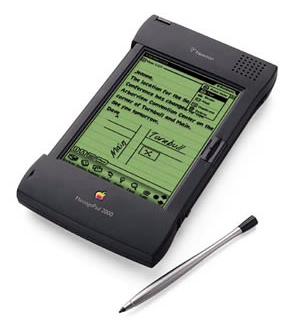 There are few products more ahead of their time than the Newton. When released, it was a complete and utter failure, but its influence is unprecedented. The Newton was flawed from the beginning; it cost too much and the software that it used for handwriting recognition didn’t work that well.
There are few products more ahead of their time than the Newton. When released, it was a complete and utter failure, but its influence is unprecedented. The Newton was flawed from the beginning; it cost too much and the software that it used for handwriting recognition didn’t work that well.Still, the products that have been inspired by the Newton have changed the way we live our lives. From Palm Pilots and PDAs to the iPad, iPhone and every other smartphone on earth, they can all be traced back to the features brought to market in the Newton and its mammoth failure.
-
The Porsche 959
 Not every product ahead of its time has to be a failure. When released in 1986, the 959 turned the super car market upside down. For starters, its twin-turbocharged six cylinder boxer engine only displaced 2.8 liters – nothing compared to the V-12 Lamborghinis and Ferraris of the day. But what it lacked in size, it made up for in power and technology.
Not every product ahead of its time has to be a failure. When released in 1986, the 959 turned the super car market upside down. For starters, its twin-turbocharged six cylinder boxer engine only displaced 2.8 liters – nothing compared to the V-12 Lamborghinis and Ferraris of the day. But what it lacked in size, it made up for in power and technology.The 959 pushed 450 horsepower through a computer-controlled all-wheel drive system. This was unheard of at the time in traditional rear wheel drive high-performance cars. It has now become one of the super car standards, along with the Audi R8, the Ferrari FF, the 911 Turbo and Porsche’s own Carrera 4 to name a few.
The legend of the 959 loomed so large that Bill Gates, after purchasing one in 1987, waited 13 years for delivery of the car. It wasn’t until US regulations on them were changed in 2000 that he was allowed to take ownership of his car from the Customs Service at the Port of Seattle.
-
WebTV
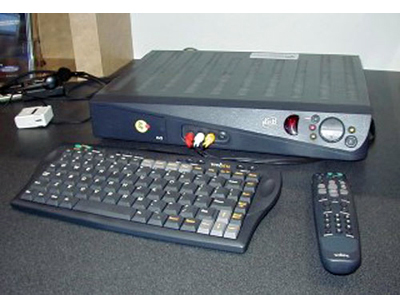 WebTV (or later MSN TV) was the first consumer device to combine the internet and your television. Launched in September of 1996, it was a glorified web browser and email terminal controlled by a wireless keyboard and remote control. Its high initial cost ($349 plus a $19.95 per month subscription fee) and limited functionality as an actual computer doomed it to failure.
WebTV (or later MSN TV) was the first consumer device to combine the internet and your television. Launched in September of 1996, it was a glorified web browser and email terminal controlled by a wireless keyboard and remote control. Its high initial cost ($349 plus a $19.95 per month subscription fee) and limited functionality as an actual computer doomed it to failure.The legacy of the WebTV lives on today, though. From the PlayStation 3 and Xbox 360 game consoles to the Apple TV and Google TV set top boxes, the use of the internet and its media on your home television has become ubiquitous. The major difference being that these devices all offer the user much more content and a much richer experience than the humble WebTV was ever capable of.
-
Nokia N-Gage
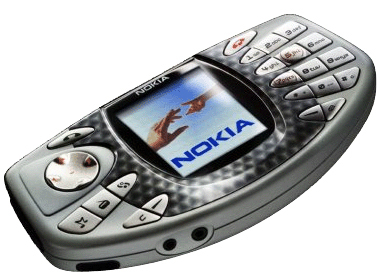 Nokia’s initial idea behind the N-Gage was to lure consumers away from the Game Boy Advance. The product was envisioned to be a handheld gaming console that also had full mobile phone functionality. The problem was that it didn’t do either particularly well. The buttons were originally designed to be used for a phone, which didn’t suit gaming very well. On the other hand, the phone interface was clumsy and not very intuitive for the user.
Nokia’s initial idea behind the N-Gage was to lure consumers away from the Game Boy Advance. The product was envisioned to be a handheld gaming console that also had full mobile phone functionality. The problem was that it didn’t do either particularly well. The buttons were originally designed to be used for a phone, which didn’t suit gaming very well. On the other hand, the phone interface was clumsy and not very intuitive for the user.Today’s smartphones are a testament to the vision that Nokia had for the N-Gage. Obviously, there is a market for a product that can excel in multiple areas. Unfortunately, that’s where Nokia dropped the ball. To be a success. it’s not enough for a product to do more than one thing; it has to do them flawlessly.
-
Lohner-Porsche Mixte-Hybrid
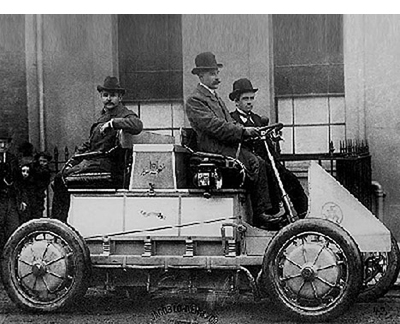 The Mixte-Hybrid was more ahead of its time than any other product on this list… by almost 100 years. Designed as the world’s first hybrid car by Ferdinand Porsche (founder of the very same company responsible for #4 on our list), it required a 44 cell 80 volt lead battery that weighed in at almost 2 tons. During its short production run, only 300 were produced, mostly due to its staggering price tag of 15,000 Austrian Crowns (over $76,000 in today’s money).
The Mixte-Hybrid was more ahead of its time than any other product on this list… by almost 100 years. Designed as the world’s first hybrid car by Ferdinand Porsche (founder of the very same company responsible for #4 on our list), it required a 44 cell 80 volt lead battery that weighed in at almost 2 tons. During its short production run, only 300 were produced, mostly due to its staggering price tag of 15,000 Austrian Crowns (over $76,000 in today’s money).While the car wasn’t a huge hit in its day (compared to the present popularity of the technology behind it), it’s a great example of how the world can just simply not be ready for a product. But in spite of a high cost or lack of demand, a great idea usually finds some way to become a hit. Even if it takes 100 years.
Conclusion
Obviously we can’t address every product that has ever been ahead of its time. Hopefully this list has provided you with some good information to keep in mind as you prepare to launch your new product. Remember, the market isn’t always ready for the technology behind a good idea. Other factors like cost and timing are always going to play a major role in how consumers react to your new product.
Posted in Marketing, Product Launch Marketing
Don`t neglect your friends, share this right away.


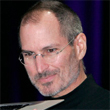
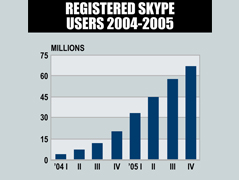
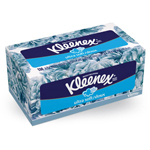
Leave a Reply